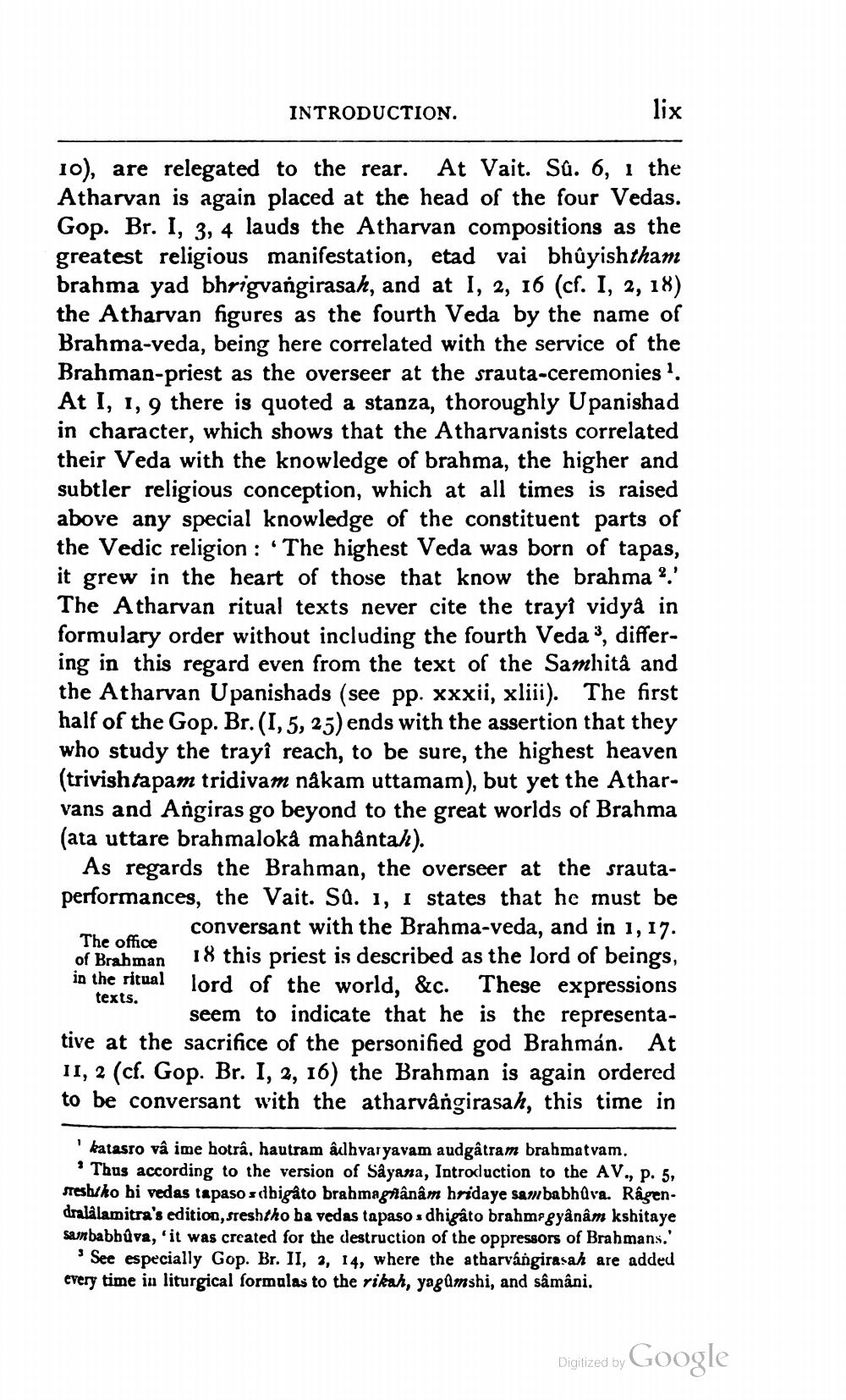________________
INTRODUCTION.
lix
10), are relegated to the rear. At Vait. Sû. 6, 1 the Atharvan is again placed at the head of the four Vedas. Gop. Br. I, 3, 4 lauds the Atharvan compositions as the greatest religious manifestation, etad vai bhủyishtham brahma yad bhrigvangirasah, and at I, 2, 16 (cf. I, 2, 18) the Atharvan figures as the fourth Veda by the name of Brahma-veda, being here correlated with the service of the Brahman-priest as the overseer at the srauta-ceremonies ?. At I, 1, 9 there is quoted a stanza, thoroughly Upanishad in character, which shows that the Atharvanists correlated their Veda with the knowledge of brahma, the higher and subtler religious conception, which at all times is raised above any special knowledge of the constituent parts of the Vedic religion : The highest Veda was born of tapas, it grew in the heart of those that know the brahma 2.' The Atharvan ritual texts never cite the trayi vidyâ in formulary order without including the fourth Veda", differing in this regard even from the text of the Samhitå and the Atharvan Upanishads (see pp. xxxii, xliii). The first half of the Gop. Br.(1,5, 25) ends with the assertion that they who study the trayî reach, to be sure, the highest heaven (trivishtapam tridivam nåkam uttamam), but yet the Atharvans and Angiras go beyond to the great worlds of Brahma (ata uttare brahmaloka mahânta).
As regards the Brahman, the overseer at the srautaperformances, the Vait. SQ. 1, I states that he must be
conversant with the Brahma-veda, and in 1, 17. The office of Brahman 18 this priest is described as the lord of beings, in the ritual lord of the world, &c. These expressions
seem to indicate that he is the representative at the sacrifice of the personified god Brahmán. At II, 2 (cf. Gop. Br. I, 2, 16) the Brahman is again ordered to be conversant with the atharvangirasah, this time in
texts.
' katasro vâ ime hotra, hautram adhyatyavam audgâtram brahmatvam,
* Thus according to the version of Sayana, Introduction to the AV., p. 5, steshiko bi vedas tapaso sdhigato brahmagriânâm hridaye sambabhůva. Râgendralalamitra's edition, sreshtho ba vedas tapaso dhigâto brahms gyânâm kshitaye sambabbûva, 'it was created for the destruction of the oppressors of Brahmans.'
"See especially Gop. Br. II, 2, 14, where the atharvangirasah are added every time in liturgical formalas to the rikah, yagümshi, and sâmâni.
Digjized by Google




